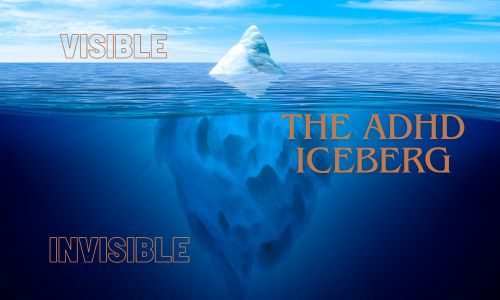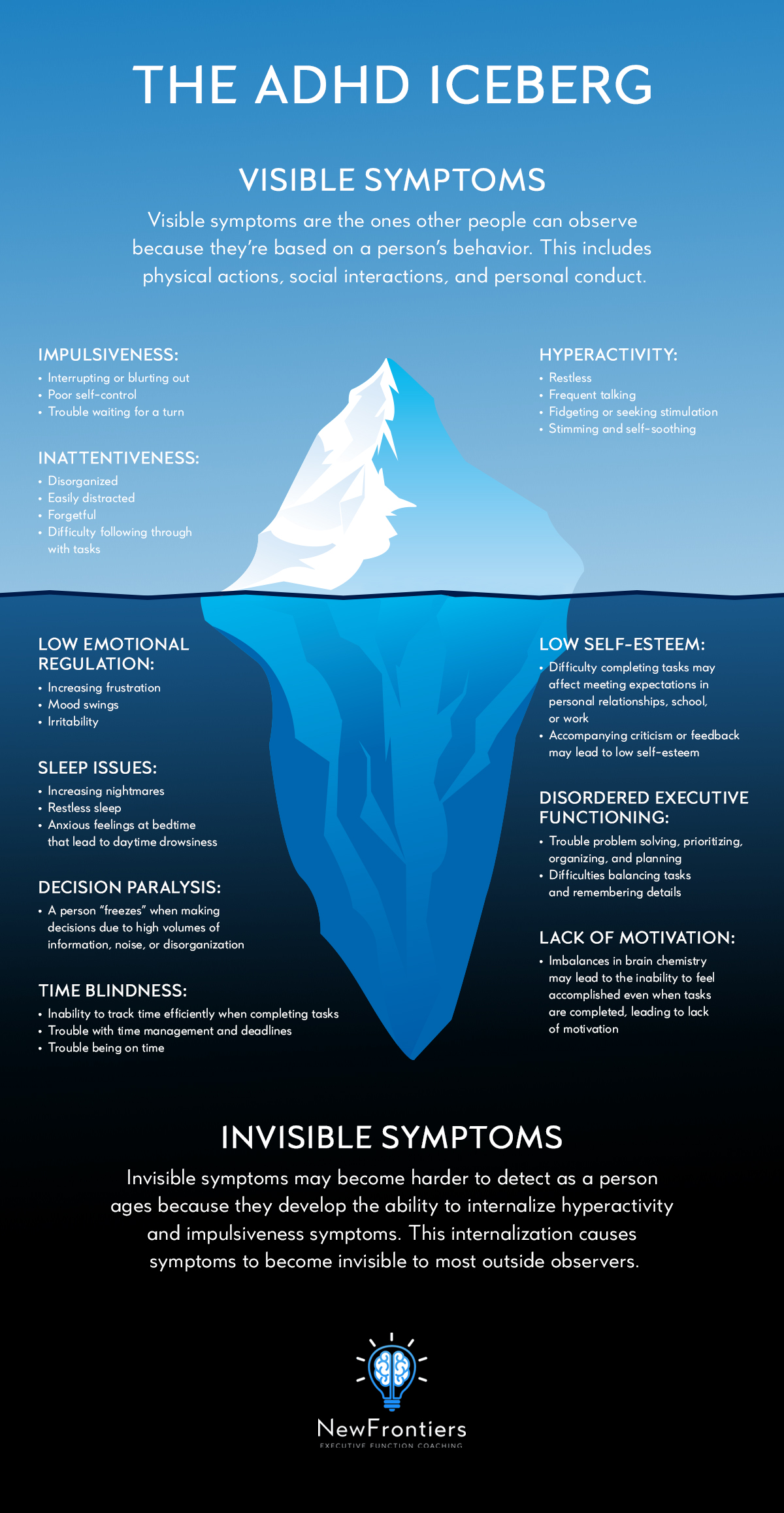
While awareness of ADHD and other neurodivergent disorders has spread significantly in the last few years, the public still largely understands ADHD from an outsider’s perspective. The most commonly cited ADHD symptoms are observable by an outsider, whether that’s a family member, a stranger, or a clinician. But people with ADHD know there is much more to the condition that is experienced only internally. This disparity between externally visible symptoms and invisible symptoms has been described as the ADHD iceberg.
What Is the ADHD Iceberg?
In nature, an iceberg generally is composed of frozen fresh water and floats in the denser salt water of the ocean. However, only a small portion of an iceberg is visible at any given time. Approximately 10% of the iceberg rests above sea level, and the other 90% is hidden beneath the surface.
The iceberg is a helpful metaphor for ADHD because the symptoms that are externally visible. The rest of the symptoms manifest primarily internally, so they can be hard to identify from the outside.
This ADHD iceberg graphic can help you visualize the vast difference between what a person with ADHD experiences and what the rest of the world sees. ADHD infographics like this one emphasize that, despite the common image of a hyperactive young person.
What Are Visible ADHD Symptoms?
If you imagine a person with ADHD, what do you see in your mind’s eye? What you’re most likely picturing represents only the ADHD symptoms that are visible. Difficulty paying attention and following conversations, struggling with routine or repetitive tasks, and having trouble with time management are all classic signs of an attention deficit, and they’re all visible from an outside perspective. The same is true of common signs of hyperactivity and impulsivity, such as fidgeting, restlessness, frequent interruption, excessive talking, and stimming. These are all common symptoms, but they’re only the tip of the ADHD iceberg.
Which ADHD Symptoms Are Invisible?
Invisible ADHD symptoms come in many shapes and sizes. While these symptoms do manifest externally, it may not be immediately clear that they’re caused or influenced by ADHD.
The first layer under the surface of the water represents the most common symptoms, which are primarily behavioral issues. These include poor emotional regulation, a tendency for frustration, and irritability.
Next are problems like sleep issues, daytime drowsiness, nightmares, memory problems, and disordered executive function. At the bottom of the iceberg are things like learning disabilities, self-esteem issues, a lack of motivation, and time blindness.
These invisible symptoms are particularly common in adults, who often internalize the external symptoms to mask the issues caused by ADHD.
How Does the ADHD Iceberg Model Help?
The ADHD iceberg is helpful to those trying to spread awareness of how the condition functions because it presents the obvious and subtle symptoms. It’s also a helpful way for patients with ADHD to visualize their own condition. This can help a patient work together with their care provider to better manage symptoms.
Finally, the iceberg can be used to aid the diagnosis process. This can be especially valuable given the differences in how male and female patients are perceived and diagnosed.





